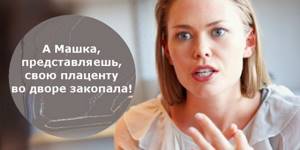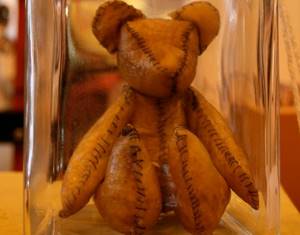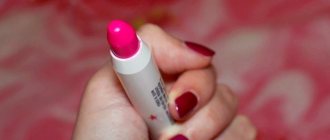What is the placenta for?
The placenta is the placenta (afterbirth) that connects the body of mother and child. The placenta is attached to the body of the uterus by blood vessels; it is connected to the body of the child with the help of the umbilical cord. Inside the umbilical cord there are 2 arteries that carry blood from the fetus to the placenta. And 1 vein, which serves to transport oxygen and nutrients from the placenta to the fetus.
The afterbirth performs certain functions throughout pregnancy:
- Gas exchange (delivery of oxygen to the fetus). Oxygen molecules pass through the mother's blood to the fetus, carbon dioxide is transported in the opposite direction.
- Delivery of nutrients to the child: water, vitamins, electrolytes. Removal of fetal metabolic products through the mother's blood.
- Production of hormones to support pregnancy and lactation.
- Fetal immune defense function. The placenta passes maternal antibodies through itself, which form the child’s immune defense.
The baby's place develops along with the child and leaves the uterus after the birth of the baby.
What it is?
What mothers and doctors call placenta in medicine has a second, scientific name - placenta. This organ is temporary; it arises, develops, ages and is rejected within a strictly limited time frame. The placenta is needed only during pregnancy. After the child is born, there is no longer a need for a “children's place”; it is born, completely ceasing its own existence.
The placenta looks like a cake, a rounded disc. During pregnancy, its thickness and structure change somewhat depending on the degree of maturity and some external and internal factors.
The placenta is located on the wall of the uterus, it is the connecting link between two - mother and fetus. Through the placenta, the baby receives oxygen, nutrition, and nutrients from the mother's bloodstream. Here everything that becomes unnecessary for the baby is returned to the mother’s body: carbon dioxide, metabolic products. The placenta produces hormones that are important for maintaining pregnancy and stimulating labor. During pregnancy, the “baby seat” serves as reliable protection for the baby.
In the understanding of obstetricians, the afterbirth is not only the placenta itself, but also some other embryonic structures that depart from the uterine cavity in the final birth stage. This is part of the umbilical cord adjacent to the placenta, all the membranes and lobules of the placenta itself.
The “baby spot” is formed from the day the fertilized egg is implanted into the uterine cavity. The chorionic villi begin to grow into the endometrium, forming a complex structure. By the 12th week of pregnancy, the chorion becomes a young placenta. Normally, from 35-36 weeks of pregnancy, the placenta rapidly ages, becomes depleted, and gradually loses its functions. At the time of birth, the average weight of the placenta is about half a kilogram.
The importance of the placenta during pregnancy is difficult to overestimate. Considering its functions, it becomes an indispensable temporary organ, without which or in the case of severe pathologies, bearing a child will be impossible.
Birth of the placenta
5-40 minutes after the birth of the child, the placenta is born. Contractions of the uterus lead to a decrease in the placental area to which the baby's place was attached. After several contractions, the placenta separates from the wall of the uterus, and the obstetrician asks the woman in labor to push slightly. The placenta is born painlessly and fairly quickly.
After removing the placenta, the doctor carefully examines it. If a violation of the integrity of the placenta is detected, this may mean that pieces of membranes remain in the uterine cavity. They must be urgently removed from the uterine cavity to prevent the development of the inflammatory process. Manual examination of the uterus is performed under anesthesia.
The progress of pregnancy can be judged by how the afterbirth looks. Infectious or inflammatory processes will be visible in the condition of the child's place. This is important information for neonatologists and pediatricians who monitor the health of the newborn.
How to prepare the placenta?
In addition to the aforementioned fruit smoothie with the addition of pieces of “children’s place”, in America the method of drying the placenta and consuming it in capsule form (encapsulation) is becoming increasingly popular. And this method is available not only to celebrities.
Thus, in the USA there are “manufacturers” who have special certificates to provide such services. For example, for $250 from the famous doula from Albany, New York, Cara Del Favero, you can purchase a “complete package” that includes tablets (capsules) with dried and crushed placenta, placental tincture, extract to enhance lactation, and dried umbilical cord as a keepsake. The placenta is “cooked” in different ways: it can be boiled using a double boiler for this purpose, and then dried, or simply dried without pre-cooking. Both methods are considered safe if hygiene requirements are strictly observed.
Another doula from North Carolina, Julia McBurney, uses a traditional Chinese method of steaming placenta, and she always adds ginger to the boiling water. The placenta should be cut into thin slices. After steaming, the placenta pieces need to be dried (this takes from 7 to 10 hours), and then crushed in a blender bowl. The resulting powder is placed in capsules - the “placental” vitamin for mom is ready!
Those who have tried their own placenta say that it tastes like liver. It turns out that eating it is not at all disgusting, even in its raw form (this, by the way, is the healthiest way to eat “offal”). Well, after “eating” women, according to them, the amount of breast milk sharply increases, their well-being improves, despondency is replaced by inspiration and optimism, the skin changes - it becomes more toned and smooth, the hair (acquires shine and additional volume).
“I have three children,” says Vera Rigali, a pharmacist from Connecticut. “I remember very well my state after the birth of my first baby, and then the second: I always wanted to cry for no reason. Doctors attributed my emotions to postpartum depression. After the birth of my youngest son Alex, I became different: I rarely cry, I look at many things with optimism and in general I am full of strength and energy. The obstetrician-gynecologist explains this by saying that I began taking capsules with the placenta three days after the birth of the child.”
You now know how to prepare the placenta, but experienced doulas warn that each body is individual, therefore the positive effect of use, as well as the time it takes for women to feel new changes in their body, may differ. In addition, the placenta will not replace medications - they are prescribed to the mother by the doctor after childbirth.
What happens to the placenta after childbirth
Most women don’t even think about the fate of the baby’s place after childbirth. In fact, nothing special happens. The placenta is a biological material that must be disposed of in accordance with the requirements of a given medical institution.
In some cases, the placenta is preserved as prescribed by a doctor. This may be necessary in case of pathological childbirth. And in the event of a stillbirth, the placenta must be submitted for histological examination to determine the causes of the incident.
Video: Histology of the placenta
Sometimes, with the consent of the mother, the afterbirth is preserved for laboratory research. The woman can take it home if she wants. Collection of umbilical cord blood and stem cells is a fairly expensive procedure, but it is possible by prior arrangement.
Some cultures have a special attitude towards the placenta after childbirth. For example, according to one of the signs, the placenta is buried under a tree in the courtyard of a house. People believe that the tree, as a symbol of strength, will bring good health and happiness to the child. Whether this is true or not depends on what a person believes.
There is a legend that if you eat the placenta after childbirth, it helps to establish lactation and quickly restores a woman’s strength after childbirth. The placenta is essentially a piece of human flesh. Perhaps in ancient times, when the only source of meat for lunch was a killed mammoth, this was relevant. But now a woman can easily organize her diet without this.
What to do with the umbilical cord: new possibilities
The placenta can be eaten, floated down a river, or buried under a tree. Dried placenta can be used to make medicine. In well-funded modern healthcare systems, another option has emerged: preserving the umbilical cord through cryogenic freezing.
The jelly-like substance of the umbilical cord contains cells that are genetically identical to the baby, but are not distributed among different types of tissue. Such cells are called stem cells: just as a new tree can grow from a single branch, so different parts of the body can theoretically grow from stem cells. Umbilical cord blood cells can grow into tissues such as bone marrow, while cord blood cells can grow into structural components of the body such as bone, muscle, cartilage and fat.
Ads for cryogenic freezing of umbilical cords claim that storing stem cells can provide a kind of insurance for a person against multiple sclerosis, Parkinson's disease or cancer. You can donate cord blood stem cells to a public bank, give them to another person, or pay a private company to store your baby's stem cells for use only by members of your family.
There is controversy over whether private banks can provide enough stem cells to treat an adult. It is unclear whether the high cost of storing a baby's umbilical cord for his own use is justified. However, within ten years we stopped throwing the afterbirth in the trash and again endowed it with an almost forgotten deep meaning.
The fate of the children's place
There are many myths and assumptions about the fate of the children's place. For example, in some African tribes it is customary to eat the placenta immediately during childbirth. Moreover, the mother of the child should eat it; according to African aborigines, this gives the woman in labor strength and restores nutrients lost during pregnancy in the body.
In our country, there are opinions that at the end of childbirth, the baby’s place is sent to special laboratories, where cosmetics are made from its tissues. There is also a widespread rumor that placental tissue is used to obtain stem cells for human cloning purposes.
However, in reality everything is much simpler. Judging by the answers of Elena Berezovskaya, who is a specialist in the field of gynecology and the author of dozens of specialized books, nothing is done from the child’s place and placental tissue in most cases is simply disposed of. Exceptions include tissues that are sent for histological examination. This occurs in the case of birth complications, stillbirths and pathologies. Also, tissues can be preserved at the insistence of the obstetrician for further research as visual material when training staff. In this case, permitting documents are not required from the woman in labor and the woman simply does not know about the subsequent fate of this organ.
Useful "by-product"
To be fair, we note that people have known for a long time that the placenta can be eaten - it is widespread in some cultures. This method of restoring vitality can be called traditional in Chinese medicine (in the Middle Kingdom, where almost everything is eaten, it has been known for many hundreds of years). For the same purpose, and also to rejuvenate the body, the placenta was eaten (and is sometimes eaten nowadays!) in Japan and Vietnam. So in this case we are not talking about any act of cannibalism, and this “process”, according to psychiatrists, is also not pathological.
What is a “children's place”? The placenta is an embryonic organ tightly “glued” to the wall of the uterus, which begins to form in a woman’s body within a week after conception. The placenta is necessary for the nutrition and respiration of the embryo, through it the fetus receives various antibodies to diseases (this is how its immunity is formed), it protects the child from shocks and other mechanical influences. At the same time, through the placenta, the fetus “returns” the products of its vital activity to the woman.
A “baby place” weighing approximately 0.45–0.8 kg, together with the membranes of the fetus (afterbirth), is released from the woman in labor following the birth of the baby. In appearance, the placenta resembles a deflated bluish ball, 2–3 cm thick and about 16–18 cm in diameter.
What substances does it contain that are beneficial to humans? “Children's place” is rich in iron, proteins, vitamins, hormones (among the latter are those that affect lactation - prolactin and oxytocin). We also note that oxytocin is responsible for our need for intimacy and love, and prolactin, according to recent data, is associated with serotonin, the hormone of joy and pleasure. Add to this the huge content of another antidepressant in the placenta - vitamin B6. That is why eating “baby place” helps not only to quickly get into shape, increase breast milk production, but also cope with postpartum depression (in another way, this condition is also called “baby blues” by Western experts).
How a child's place is born
During the normal course of labor, the placenta comes out immediately after the baby, which the woman may not even feel. However, everything does not always go exactly according to plan and the tissue, for a number of reasons, may not come out on its own; in this case, an obstetrician comes to the woman’s aid and can use a number of actions to normalize labor.
To activate uterine contractions, there are many methods that will help a woman give birth to a baby's place. The simplest method is to place the newborn on the mother's breast. If for a number of reasons it is impossible to bring the baby to the mother, the woman herself can massage her breasts. Stimulation of the nipples causes contractions of the uterine muscles and most often these actions are enough for a successful birth of the place.
In cases where breast stimulation does not bring positive results, the woman is asked to get on all fours and make circular movements with her pelvis. Although twirling your buttocks during childbirth is not very common, it will increase blood circulation and speed up placental abruption.
If this method does not help, obstetricians resort to the manual method of removing placental tissue. In this case, the obstetrician squeezes the mother’s belly with a special grip, forcing her to push as if she were giving birth. This procedure helps the membrane to come off in most cases.
This method of delivering the placenta is called the Ambuladze method.
The method does not involve internal intervention and does not cause pain to the mother in labor. All obstetricians without exception are trained in this method.
Assessment of a woman's condition
After the examination of the placenta is completed, it is weighed and the data is recorded in the mother’s card. Blood loss is assessed and data is also recorded in the labor management log. Then the woman in labor is given an antiseptic treatment - the birth canal is carefully examined, washed with a disinfectant solution, tears and minor injuries are stitched up.
The path to bringing a child into the world is quite long and labor-intensive. After contractions, pushing and the birth of the baby, the girl also experiences the separation of the placenta. It is very important to ensure that everything goes according to the rules and quickly. If even the smallest particle of the child's place remains in the uterus, further inflammation and deterioration of well-being cannot be avoided.
In order to understand what the afterbirth looks like, you need to understand its structure and pay attention to the functions that are assigned to it. This temporary organ is very important for the baby and mother during pregnancy, and its proper release has a huge impact on the future well-being of the young mother.
The afterbirth is a temporary organ that the embryo needs throughout the entire pregnancy.
It plays a special role in the breathing, nutrition and development of the baby, and also protects the fetus from harmful external factors.
Visually, the child's place looks like a bag, to which a membrane is attached inside. This membrane performs an important function, as it is the connection between the circulatory system of the baby and the mother.
The system consists of a membrane, placenta and umbilical cord. You should know that everything is formed in the 4th month, and by the 36th week it tends to age. You can talk about how much a given organ weighs based on the situation. If pregnancy is normal and there are no complications, the weight will be 500 g, the size will be from 15 to 20 cm.
What to do with the placenta after childbirth?
In Moscow maternity hospitals, it is not uncommon for doctors to ask parents if they want to take the placenta with them. In a home birth, the placenta remains with the baby and the parents have to decide what to do with it next. Here are 5 ways to use your placenta after giving birth. In traditional cultures, the placenta is considered the baby's first home, its spiritual twin and even relative. The placenta is buried in a special place, dried, eaten, and even the first teether for the baby is made from the umbilical cord. Robin Lim, a midwife at the Balinese Bumi Sehat Center, wrote an entire book on the meaning of the placenta, where she collected rituals from all over the world. In ancient Rus', the placenta was buried under a tree or in the foundation of a house. The modern tradition is to leave the placenta in the maternity hospital and forget about it immediately after birth. But no one is stopping you, if you wish, from coming up with a little ritual for your family and preserving the placenta for yourself and your newborn baby.
Where does the umbilical cord go after childbirth?
After the baby is born, the umbilical cord is often cut immediately. Sometimes it is left until it “dries out.” The umbilical cord along with the placenta are examined and then either disposed of or given to the woman in labor (optional).
Sometimes women in labor take away the separated organ. But why take the placenta after birth?
Blood from the placenta can be frozen. After which it remains to be stored in a special blood bank. And if the baby needs a blood transfusion, that’s where it comes from.
Take and eat your placenta
This is traditionally done in some parts of Indonesia, the Czech Republic and Morocco. It is believed that a woman who eats her placenta will be fertile. In Mexico, the mother is given the umbilical cord to chew, and in Bali, midwives from Bumi Sehat offer the mother in labor to eat a piece of raw placenta immediately after birth to prevent postpartum hemorrhage. Why do some people hate to think about it?
The placenta is the most real part of the human body. It is made from human tissue and looks like a piece of fresh flesh. In our society, the ban on eating one’s own kind is one of the most ancient. Cases of cannibalism terrify us. Therefore, the very thought of eating placenta makes many people disgusted. It's almost like tasting a human body. It looks like Sorokin. That is why placenta encapsulation is becoming increasingly common. It seems to be essentially the same, but swallowing pills is a completely different matter; this is quite traditional and in our society is associated with treatment and benefits. Sometimes 2-3 teaspoons of placenta are added to a smoothie (with banana, berries and coconut water), sometimes swallowed like this. There is even a special service for preparing smoothies right in the birth box; parents usually add it to their birth plan and pay about $20-30.
Some people prepare a real dish from the placenta. We came across recipes for lasagna and spaghetti bolognese made from placenta. In 1998, chef Hugh Fearnley-Whittingstall made a placenta pate on his cooking show. And in 2006, Tom Cruise promised to arrange a feast with the placenta after the birth of his wife Katie Holmes. With the exception of whales, almost all mammals in nature do exactly this with the placenta - no, they don’t cook lasagna, they simply take it and eat it whole. In addition to its obvious nutritional value, the placenta is a source of prostaglandins, estrogen and progesterone, which help the uterus return to its pre-pregnancy state. Plus oxytocin, which helps the uterus contract and is responsible for milk production, and zinc, a mineral that helps prevent postpartum depression. At the moment, there is no reliable scientific data on the benefits or harms of placentophagy. But some researchers became interested in the issue and began studying the effect and composition of the placenta.
Destroying myths about the placenta
- Placenta from mothers in labor is used in cosmetology
At the moment, the Republic of Belarus does not enter into any agreements with other countries for the supply of afterbirths for the purpose of using them for cosmetic purposes. All afterbirths are strictly subject to disposal.
Therefore, scary stories that after giving birth a woman who is not aware of her actions is given some documents to sign about the transfer of her placenta for the production of creams - this is a myth.
- the placenta must be eaten or buried
More and more women want to take the placenta home with them after giving birth. Each pursues its own goal. Someone is afraid that the placenta will be sold to cosmetics manufacturers, we have already dealt with this point.
But there are also completely absurd ideas: eating or burying the placenta. Where did they come from?!
Animals do this in the wild. Why? For many reasons. They bury it so that predators don’t smell the blood. They are eaten to obtain nutrients, since in a deeply pregnant state it was difficult to find food and many animals have to starve on the eve of giving birth. But why do we, civilized women, need this?!
Predators are not our topic at all, but there are plenty of nutrients in any hypermarket. In some countries, even today, there is the practice of eating placentas after childbirth, but these are precisely the countries where cannibalism was practiced.
I heard that in some civilized countries pieces of the placenta are wrapped in silver or gold and worn like a pendant around the neck. What they can’t come up with these days!

According to the order of the Ministry of Health of the Republic of Belarus No. 111 “On further improvement of the pathological service of the Republic of Belarus:
Histological preparations can be given to the patient, his relatives or medical personnel for consultation in another medical institution if there is an official written request from this institution. The medical institution to which the drugs were issued is obliged to return them to the pathology department. Handing out study forms to patients is prohibited.
We can sleep peacefully, without puzzling ourselves with questions that at the moment someone is applying cream from our placenta to our face, and at the same time we are not looking for somewhere more reliable to bury it.
Make pills from placenta
It's almost like eating, but in a more culturally acceptable way. Over the past 5 years, placenta encapsulation has become increasingly popular. In 2013, actress January Jones (Mad Men's Betty Draper) praised placenta capsules as a treatment for postpartum depression. There are two main ways to do encapsulation:
- By analogy with Chinese medicine (where the placenta has long been used as medicine), dry the placenta along with herbs
- in the traditions of raw foodists, use only a dehydrator that does not heat the placenta above 40'
Only fresh placenta (no more than 48 hours) that has been stored in the refrigerator is suitable for encapsulation. The output is 100-200 capsules, which can be stored there, in the refrigerator. The process itself is most often undertaken by midwives, doulas or placenta encapsulation specialists. Everything takes about 2-3 days and costs $150-250. Sometimes mothers carry out encapsulation themselves (the process is in the PHOTO). To do this, you need a dehydrator, a device for packaging placenta powder into capsules, and the capsules themselves. You can order special kits on the Internet (about $30), however, you need to get a dehydrator in advance or use an oven. Opinions about placenta pills are very different. Here's a heartfelt review from Jill Fehrenbacher, founder and publisher of hipster mom-and-baby site Inhabitots, about her experience with placenta encapsulation. Here is a post of regret from Nancy Radd, a journalist and Harvard graduate who managed to become Miss Virginia in 2010 and received a bunch of awards for her work in the field of women's health. She writes that taking pills with her own placenta, on the contrary, provoked a deterioration in her mood after childbirth.
Teddy bear made from placenta

Why is the placenta preserved? Among the entire list, this item is perhaps the strangest. At one of the exhibitions there was once a presentation of such a bear made from placenta. It was created to “symbolize the unity of baby, mother and placenta.”
Before production, the placenta must be cut and treated with sea salt to achieve the desired dryness. The material is then treated with tannic acid and egg yolk to make it easy to bend and shape.
Nothing more to add. This is art - it must be accepted.
Bury the placenta next to the plant
This tradition has also existed for quite a long time. In Hawaii, the placenta is planted under a tree. which in the future becomes the child’s tree, and in Sudan the placenta is considered a “spiritual double” and is buried closer to the place of the offspring’s desired job (for example, next to the hospital for the future doctor). Actor Matthew McConaughey did just that with the placenta of his newborn son Levi - he planted it under a tree in an orchard. You can order a special placenta rooting kit online: a bag, a tree tag, and a book for your baby about the placenta under his own plant. There is also a whole section about types of trees and their symbolic meaning. Probably, the Druid horoscope is also quite suitable for these purposes. Important! The placenta should be buried deep enough (at least 40 cm), as it can damage the root system of the tree, and local predators can smell it. You can put the placenta in the freezer and wait six months or a year, then it will become less active.
Most often, the placenta is buried in a place where the family will return for many years. If there is no such place yet, you can choose the option for modern nomads and plant the placenta in a large flower tub. Given the northern climate, this method allows you to expand the choice of totem plants. Last year, at the Morning Star Sisters' workshop, one such placenta was planted from a refrigerator in a tub with an orange tree. The sister sang Indian blessings, and most of those present (including the author) even shed tears while participating in this ritual.
Make an imprint with the placenta
For creative types, there is a way to leave a placenta print as a souvenir. To do this, just take a large sheet of paper and beautifully lay the placenta on it. Sometimes the print is made without paint - with the blood that remains on the placenta. In this case, you need to choose acid-free paper for archival storage. If you use gouache, acrylic or watercolor for the print, then regular drawing paper is also quite suitable. The placenta is applied to the sheet on the side where the umbilical cord is attached (this is the baby's side). Then the print looks like a tree with a wide crown and tenacious roots.
Make a decoration from the placenta
Pieces of dried placenta or umbilical cord are turned into beads or ready-made rings and pendants using epoxy resin. Those who know how to handle such things can try making jewelry themselves. The rest will have to figure out a way to send the placenta to the artisans who create such jewelry. For example, in Beyond the Willow, where they promise to build such a bracelet within 2-4 weeks. There are also rings made from breast milk, but more about that another time! In Moscow, I know one mother-jeweler who will not be at all surprised by your desire.










